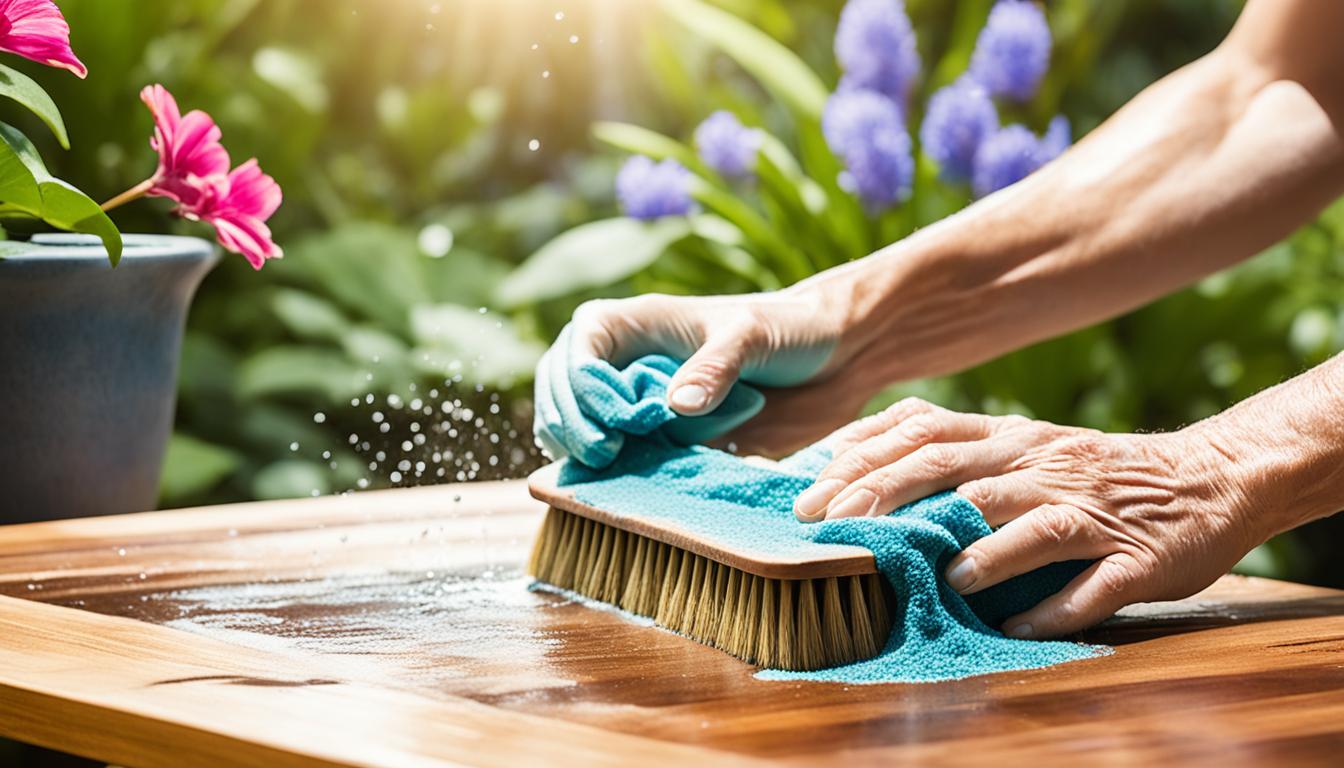Are you looking to breathe new life into your wooden furniture or floors without the hassle of sanding? Removing varnish without sanding might just be the solution you’ve been searching for! Whether you want to refinish a beloved piece or update your space, this non-sanding method can save you time and effort. Let’s dive into how you can achieve a fresh look with minimal fuss.
Why Do You Want to Remove Varnish Without Sanding?
Are you tired of the dusty mess and labor-intensive process of sanding? Removing varnish without sanding offers a quicker and cleaner alternative for reviving wood surfaces. By skipping the sandpaper, you can avoid creating unnecessary dust particles that can be harmful to your health and time-consuming to clean up.

Additionally, non-sanding methods are gentler on the wood itself, reducing the risk of over-sanding or damaging delicate details in intricate pieces. This approach allows you to preserve the natural beauty of the wood while still achieving a professional-looking finish. So why not explore this efficient technique for a smoother refinishing experience?
Materials Needed for Non-sanding Varnish Removal
To successfully remove varnish from wood without sanding, you’ll need a few key materials. First, grab a can of quality varnish remover—make sure it’s suitable for your specific type of varnish. Next, stock up on some rubber gloves to protect your hands during the removal process. You’ll also need a paintbrush or old rag to apply the varnish remover evenly to the wood surface.
Additionally, have some plastic wrap on hand to cover and seal the treated area while the varnish remover works its magic. A scraper tool will come in handy for gently lifting off the softened varnish layers. Prepare some clean rags and wood conditioner to restore and protect the freshly cleaned wood surface once the varnish is removed.
How to Remove Varnish From Wood Without Sanding?
Are you looking to give your wooden furniture a fresh new look without the hassle of sanding? Here’s a simple step-by-step guide on how to remove varnish without sanding.
Preparing the Wood Surface
Before removing varnish from wood without sanding, it’s crucial to prepare the surface properly. Start by clearing the area around the wood piece to avoid any mess. Next, ensure good ventilation, as some varnish removers can be strong-smelling.

Before starting the process, inspect the wood for any nails or hardware that may need to be removed. It’s also a good idea to test a small, inconspicuous area with the varnish remover first to see how it reacts with your specific type of wood.
When you begin the varnish removal process, gather all your materials and tools in one place for easy access. Proper preparation sets a solid foundation for successful non-sanding varnish removal.
Applying the Varnish Remover
When applying the varnish remover, start by ensuring you are in a well-ventilated area to avoid inhaling fumes. Then, protect your hands with gloves and eyes with safety goggles before beginning the application process.
Using a brush or cloth, generously apply the varnish remover to the wood surface. Follow the manufacturer’s instructions for how long to let it sit and penetrate the varnish properly. This step is crucial in softening the varnish for easy removal without sanding.
Allow enough time for the varnish remover to work its magic. Stay patient as it breaks down the old finish, making it easier to scrape off later on. Remember, patience is key when removing varnish without sanding!
Removing the Softened Varnish
Once the varnish remover has had time to soften the old finish on your wood, it’s time to start removing it. Grab a scraper or a putty knife to gently lift off the softened varnish. Be careful not to gouge or damage the wood underneath as you work.
Work in small sections, scraping away the softened varnish as you go. It may take some elbow grease, but with patience and care, you’ll see the layers of varnish lifting off easily. If needed, apply more varnish remover and let it sit for a bit longer before scraping again.
Continue this process until all traces of varnish have been removed from the wood surface. Once finished, wipe down the wood with a clean cloth dampened with mineral spirits to remove any leftover residue.
Cleaning and Conditioning the Wood
After removing the softened varnish, it’s crucial to clean and condition the wood to restore its natural beauty. Start by wiping down the surface with a damp cloth to remove any residue from the varnish remover. This step ensures that no traces of chemicals are left on the wood.

Once the wood is free from any remaining varnish, apply a high-quality wood cleaner using a soft cloth or sponge. Gently scrub in circular motions to lift dirt and grime from the pores of the wood. This deep cleaning process will help prepare the surface for conditioning.
To finish off, apply a generous amount of wood conditioner using a clean cloth. Allow it to penetrate into the wood for several minutes before buffing off any excess product. Conditioning not only nourishes and protects the wood but also enhances its natural luster and color.
Tips for Successful Non-sanding Varnish Removal
Successfully removing varnish without sanding requires attention to detail and patience. One key tip is to choose a high-quality varnish remover that suits the type of varnish on your wood surface. Reading and following the product instructions carefully can make a significant difference in the outcome.
Another useful tip is to test the varnish remover on a small, inconspicuous area of the wood first to ensure compatibility and avoid any unwanted damage. This simple step can help you understand how the remover works on your specific wood type before tackling larger areas.
Work in a well-ventilated area when applying the varnish remover, as some products may produce strong fumes. Additionally, wearing protective gloves and eyewear can help prevent skin or eye irritation during the removal process.
Possible Risks or Drawbacks of This Method
While removing varnish without sanding can be convenient, it’s essential to consider the potential risks and drawbacks associated with this approach. One possible risk is that some varnish removers contain harsh chemicals that may pose health hazards if not used properly. It’s crucial to follow safety precautions and use protective gear when working with these products.
Another drawback to non-sanding varnish removal is the time and effort it may require. Depending on the thickness of the varnish layers and the type of remover used, multiple applications might be necessary for complete removal. This process can be time-consuming, especially for larger surface areas or intricate woodwork.
Additionally, there is a possibility that certain types of wood may react differently to varnish removers, potentially causing damage or discoloration. It’s important to test a small, inconspicuous area before proceeding with full-scale varnish removal to avoid any unwanted effects on the wood surface.
Conclusion
After following the step-by-step guide and utilizing the tips provided, you should now have successfully removed the varnish from the wood without sanding. This method not only saves time and effort but also helps preserve the integrity of your wooden surfaces.
Remember to always test a small area first before proceeding with the entire project to ensure compatibility with your specific wood type. By using varnish remover and taking proper care during the process, you can achieve a beautifully refreshed wood finish that is ready for refinishing or painting. Enjoy your newly restored wood surfaces!
FAQ
Is it possible to remove varnish from wood without sanding?
Yes, it is possible to remove varnish from wood without sanding using a varnish remover and gentle scraping techniques.
Why choose non-sanding methods for varnish removal?
Non-sanding methods offer a quicker, cleaner, and gentler alternative to sanding, reducing dust, preserving wood integrity, and achieving a professional finish.
What materials are needed for non-sanding varnish removal?
You will need varnish remover, rubber gloves, a paintbrush or rag, plastic wrap, a scraper tool, clean rags, and wood conditioner for successful varnish removal.
How do you remove varnish without sanding step-by-step?
The process involves preparing the surface, applying the varnish remover, removing the softened varnish with a scraper, and cleaning and conditioning the wood for a refreshed finish.
What are some risks or drawbacks of removing varnish without sanding?
Risks include potential health hazards from harsh chemicals in varnish removers, the time and effort required for thorough removal, and the possibility of adverse reactions on certain wood types.







